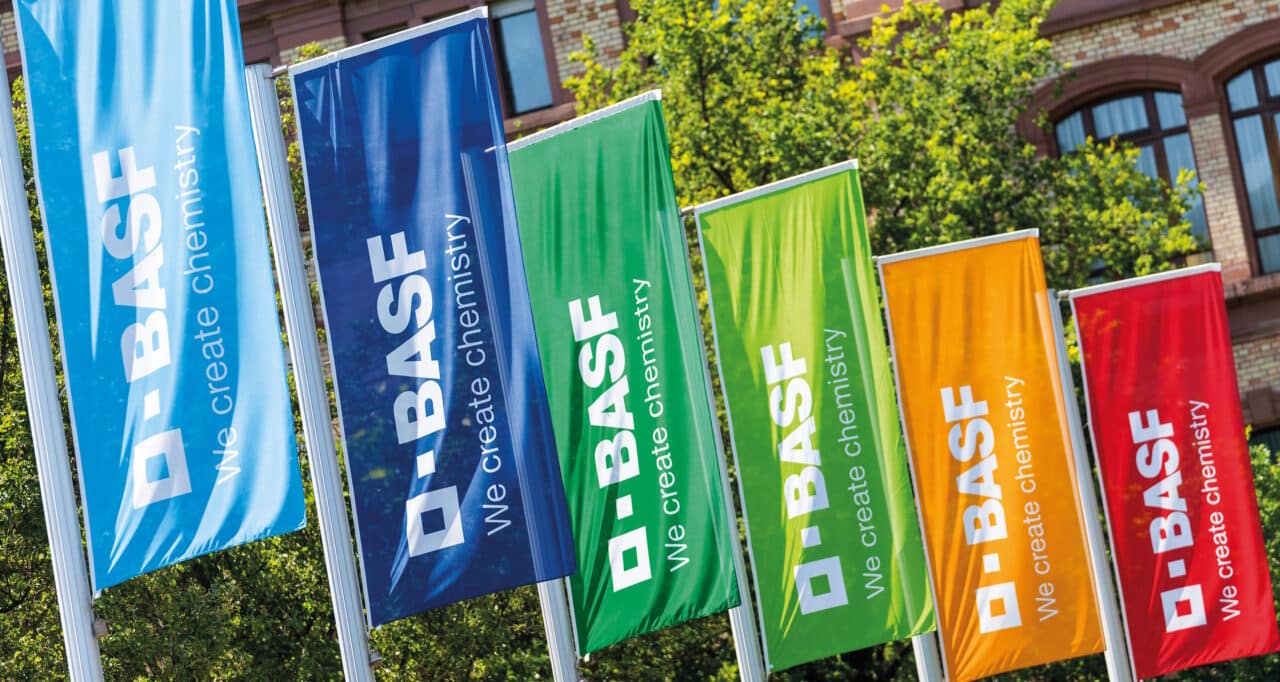Editor’s note: All references to the name of the NVIDIA CUDA Quantum platform were changed to NVIDIA CUDA-Q in April 2024.
Michael Kuehn and Davide Vodola are taking to new heights work that’s pioneering quantum computing for the world’s largest chemical company.
The BASF researchers are demonstrating how a quantum algorithm can see what no traditional simulation can — key attributes of NTA, a compound with applications that include removing toxic metals like iron from a city’s wastewater.
The quantum computing team at BASF simulated on GPUs how the equivalent of 24 qubits — the processing engines of a quantum computer — can tackle the challenge.
Many corporate R&D centers would consider that a major achievement, but they pressed on, and recently ran their first 60 qubit simulations on NVIDIA’s Eos H100 Supercomputer.
“It’s the largest simulation of a molecule using a quantum algorithm we’ve ever run,” said Kuehn.
Flexible, Friendly Software
BASF is running the simulation on NVIDIA CUDA-Q, a platform for programming CPUs, GPUs and quantum computers, also known as QPUs.
Vodola described it as “very flexible and user friendly, letting us build up a complex quantum circuit simulation from relatively simple building blocks. Without CUDA-Q, it would be impossible to run this simulation,” he said.
The work requires a lot of heavy lifting, too, so BASF turned to an NVIDIA DGX Cloud service that uses NVIDIA H100 Tensor Core GPUs.
“We need a lot of computing power, and the NVIDIA platform is significantly faster than CPU-based hardware for this kind of simulation,” said Kuehn.
BASF’s quantum computing initiative, which Kuehn helped launch, started in 2017. In addition to its work in chemistry, the team is developing use cases for quantum computing in machine learning as well as optimizations for logistics and scheduling.
An Expanding CUDA-Q Community
Other research groups are also advancing science with CUDA-Q.
At SUNY Stony Brook, researchers are pushing the boundaries of high-energy physics to simulate complex interactions of subatomic particles. Their work promises new discoveries in fundamental physics.
“CUDA-Q enables us to do quantum simulations that would otherwise be impossible,” said Dmitri Kharzeev, a SUNY professor and scientist at Brookhaven National Lab.
In addition, a research team at Hewlett Packard Labs is using the Perlmutter supercomputer to explore magnetic phase transition in quantum chemistry in one of the largest simulations of its kind. The effort could reveal important and unknown details of physical processes too difficult to model with conventional techniques.
“As quantum computers progress toward useful applications, high-performance classical simulations will be key for prototyping novel quantum algorithms,” said Kirk Bresniker, a chief architect at Hewlett Packard Labs. “Simulating and learning from quantum data are promising avenues toward tapping quantum computing’s potential.”
A Quantum Center for Healthcare
These efforts come as support for CUDA-Q expands worldwide.
Classiq — an Israeli startup that already has more than 400 universities using its novel approach to writing quantum programs — announced today a new research center at the Tel Aviv Sourasky Medical Center, Israel’s largest teaching hospital.
Created in collaboration with NVIDIA, it will train experts in life science to write quantum applications that could someday help doctors diagnose diseases or accelerate the discovery of new drugs.
Classiq created quantum design software that automates low-level tasks, so developers don’t need to know all the complex details of how a quantum computer works. It’s now being integrated with CUDA-Q.
Terra Quantum, a quantum services company with headquarters in Germany and Switzerland, is developing hybrid quantum applications for life sciences, energy, chemistry and finance that will run on CUDA-Q. And IQM in Finland is enabling its superconducting QPU to use CUDA-Q.
Quantum Loves Grace Hopper
Several companies, including Oxford Quantum Circuits, will use NVIDIA Grace Hopper Superchips to power their hybrid quantum efforts. Based in Reading, England, Oxford Quantum is using Grace Hopper in a hybrid QPU/GPU system programmed by CUDA-Q.
Quantum Machines announced that the Israeli National Quantum Center will be the first deployment of NVIDIA DGX Quantum, a system using Grace Hopper Superchips. Based in Tel Aviv, the center will tap DGX Quantum to power quantum computers from Quantware, ORCA Computing and more.
In addition, Grace Hopper is being put to work by qBraid, in Chicago, to build a quantum cloud service, and Fermioniq, in Amsterdam, to develop tensor-network algorithms.
The large quantity of shared memory and the memory bandwidth of Grace Hopper make these superchips an excellent fit for memory-hungry quantum simulations.
Get started programming hybrid quantum systems today with the latest release of CUDA-Q from NGC, NVIDIA’s catalog of accelerated software, or GitHub.
(Picture above source: BASF)
